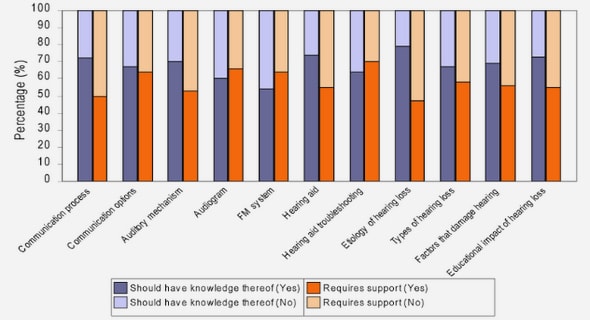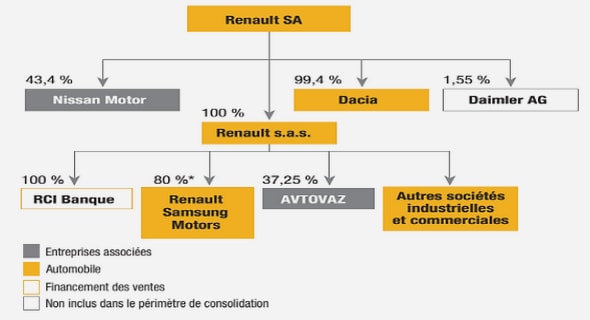Get Complete Project Material File(s) Now! »
Real Sections
The only interval on the positive real axis, which belongs to the FxLMS root locus, is (0, 1). Proof: an interval on the real axis belongs to the root locus if the open loop transfer function H (z) has an odd number of zeros and poles to its right. According to Eq. (8.12), the zeros of H (z) are identical to the roots of G (z). H (z) = 0 ⇔ G (z) = 0 (8.46) Since all the coefficients of G(z) are positive real scalars, the real roots of G(z) can be only negative. Therefore, G (z) has no real roots to the right of the imaginary axis. However, G(z) may have complex conjugate pairs of roots with positive real parts. As a conclusion, the roots of G(z), which have positive real parts, are complex conjugate pairs. Therefore, G (z) and, consequently, H (z) has an even number of roots to the right side of any point in the positive real axis. Besides, H (z) has only a single pole at z = 1. Considering this pole, the following statements can be deduced.
Typical Trajectory of B1
It can be seen that B1 always starts at z = 1 and moves towards the origin on the real axis. This branch leaves the real axis once it reaches the breakaway point xB. After that, this branch may end at a complex zero of H (z) or approach an asymptote of the root locus. The trajectory of B1 just after departing from its start point (or before reaching the breakaway point) is independent of the secondary path parameters; however, the location of xB and the possible end-point/asymptote are functions of secondary path parameters. In Figure 8.2, three different examples of the FxLMS root locus with different secondary paths are shown. In the first example, B1 approaches an asymptote after leaving the breakaway point (Figure 8.2a). In the second example, B1 ends at a finite zeros inside the unit circle (Figure 8.2b) and in the third example, this branch ends at a finite zeros outside the unit circle (Figure 8.2c). As can be seen, although the end point of B1 is different in each example, its trajectory before reaching the breakaway point is constant (typical). This typical trajectory is shown in figure 8.3.
Typical Trajectory of B2
As another typical behaviour of the FxLMS root locus, B2 starts at z = 0 and moves towards the unit circle on the positive real axis. This branch leaves the real axis once it reaches the breakaway point xB in such a way that points of this branch remain complex conjugates of those of B1. This branch may end at a zero of H (z), which is the complex conjugate of the end point of B1, or approach an asymptote of the locus. Before reaching the breakaway point, the trajectory of B2 is independent of the secondary
Typical Trajectory of Be1
As a typical property of the FwFxLMS root locus, Be1 always starts at z = 1 and moves towards the origin on the real axis. If the control parameter ξ satisfies the inequality given in Eq. (9.70), then there is no breakaway point on the interval of (ξ, 1). This causes Be1 to continue its trajectory on the real axis until it reaches the end point at z = ξ. This typical trajectory is shown in Figure 9.1. Figure 9.2 shows the FwFxLMS root locus for the example, described in Chapter 8, and when ξ is set to 0.7. As can be seen, there is no breakaway point on the trajectory of the dominant root (branch B1) and, therefore, the interval of (ξ, 1) is considered as the first branch of the root locus. (compared to the FxLMS root locus shown in Figure 8.1). This plot is obtained using numerical methods in MATLAB; however, the validity of all of the analytical rules, described in Section 9.3, can be seen in this plot.#Dominant Pole of FwFxLMS Adaptation Process Based on the typical trajectories of the FwFxLMS root locus branches, described above, it is expected that the nearest root to the unit circle is located on Be1. Therefore, this branch contains the dominant root of the FwFxLMS characteristic equation. This property is common in both of the FxLMS and FwFxLMS root loci. However, in the FxLMS root locus, B1 detours towards the unit circle once reaching the breakaway point. Therefore, the maximum distance of the dominant root from the unit circle is equal to the distance of the breakaway point to z = 1. In the FwFxLMS root locus there is no breakaway point and, therefore, the root moving on Be1 can get closer to the origin (until it reaches the branch end point at z = ξ). As a result, the dominant pole can be pushed towards the origin and, therefore, the dynamic of the FwFxLMS adaptation process becomes faster than that of the FxLMS.
Computer Simulation
This section verifies the validity and accuracy of the theoretical results, obtained in this chapter, by using computer simulation. Each curve is obtained by averaging over 100 simulation runs with independent noise sequences. In the simulation experiment, the impulse responses of the primary and secondary paths are similar to those used in Chapter 7. Also, the secondary path model is a perfect model and the acoustic noise is an stochastic white noise of power 1 (σ 2 x = 1), generated by the computer. In the first experiment, the FxLMS algorithm is used. The root locus of the adaptation process, performed by this algorithm, is plotted in Figure 9.3a. As can be seen, the branch containing the dominant root (B1) returns towards the unit circle after reaching the breakaway point xB. In the second experiment, the FwFxLMS algorithm with ξ = 0.7 is used. The root locus of the adaptation process, performed by this algorithm, is plotted in Figure 9.3b. As can be seen, the extra root of the FwFxLMS algorithm removes the breakaway point from the trajectory of the dominant root. In the third experiment, the FwFxLMS algorithm with ξ = 0.5 is used. The root locus of the adaptation process, performed by this algorithm, is plotted in Figure 9.3c.
Contents :
- Front Matter
- Abstract
- Publications
- Contents
- List of Figures
- 1 Introduction
- 1.1 Physical Principles of Active Noise Control
- 1.1.1 Acoustic Wave Propagation
- 1.1.2 Superposition Property
- 1.1.3 Acoustic Wave Interference
- 1.2 How to Create a Silence Zone
- 1.2.1 ANC Physical Mechanism
- 1.2.2 Digital Electronic Control System
- 1.2.2.1 Secondary Path Constraint
- 1.2.2.2 Reference Signal Measurement Constraint
- 1.2.3 Adjustment of ANC Controller
- 1.3 Adaptive Active Noise Control
- 1.3.1 Adaptive Identification of ANC Controller
- 1.3.2 ANC Algorithms
- 1.3.2.1 Frequency Domain ANC Algorithms
- 1.3.2.2 Sub-Band ANC Algorithms
- 1.4 FxLMS Adaptation Process
- 1.4.1 Performance of FxLMS Adaptation Process
- 1.4.2 Adaptation Step-Size
- 1.4.3 Secondary Path Modelling Error
- 1.5 Thesis Contributions
- 1.6 Thesis Organisation
- 1.1 Physical Principles of Active Noise Control
- 2 Basic Principles of FxLMS Algorithm
- 2.1 Single Channel Feed-forward ANC
- 2.1.1 Control Signal
- 2.1.2 Actual Secondary Path
- 2.1.3 Secondary Path Model
- 2.2 Algorithm Derivation
- 2.2.1 Modelling Residual Noise
- 2.2.2 Optimal ANC Controller
- 2.2.3 Gradient-Based Optimisation
- 2.3 Rotated Vectors
- 2.3.1 Auto-Correlation Matrix
- 2.3.2 Rotated Reference Vector
- 2.3.3 Rotated Weight Misalignment Vector
- 2.4 Independence Assumptions
- 2.4.1 Primary Independence Assumption
- 2.4.2 Secondary Independence Assumption
- 2.4.3 Independence of Weights and Reference Signal
- 2.5 Basic Model for FxLMS-Based ANC
- 2.5.1 Alternative Expression for FxLMS Update Equation
- 2.5.2 Alternative Expression for Residual Acoustic Noise
- 2.5.3 Dynamics of First-Order Moments
- 2.1 Single Channel Feed-forward ANC
- 3 Stochastic Model for FxLMS-Based ANC
- 3.1 MSE Function
- 3.2 Excess-MSE Function
- 3.3 Variation of Al (n)
- 3.4 Variation of Bl (n)
- 3.5 Stochastic Model for Excess-MSE Function
- 4 Analysis of FxLMS-Based ANC Systems Considering General Secondary Paths
- 4.1 System Model with General Secondary Path
- 4.2 Steady-State Performance
- 4.2.1 Steady-State Residual Noise Power
- 4.2.2 Misadjustment Level
- 4.3 Stability Analysis
- 5 Influences of Acoustic Noise band-width on FxLMS-Based ANC Systems
- 6 Influences of Secondary Path Models on FxLMS-Based ANC Systems
- 7 Behaviours of FxLMS-Based ANC Systems in Computer Simulation
- 8 Root Locus of FxLMS Adaptation Process
- 9 Dominant Pole Localisation of FxLMS Adaptation Process
- 10 Experimental Realisation
- 11 Conclusions and Future Work
GET THE COMPLETE PROJECT
Stability Analysis of Adaptation Process in FxLMS-Based Active Noise Control

